Elements of Cheese or Font
Core:
- Font and cheese names
- Input selection field
- Score indicator – correct or wrong
Supportive:
- Hints
- Timer
Extraneous:
- Prev/next buttons
- Correct answer with blurb about answer
- Column color scheme
Thumbnail Sketches
Core Elements
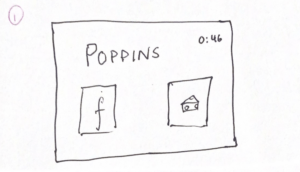
One Huge Element

One Color
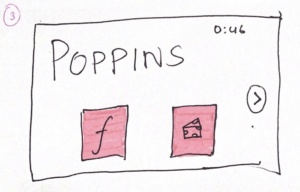
Exploring Type
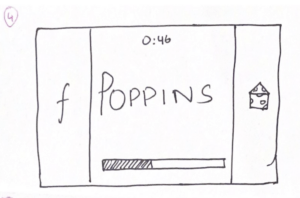
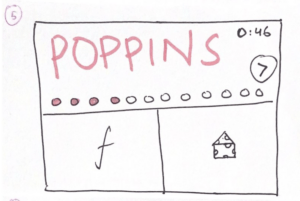
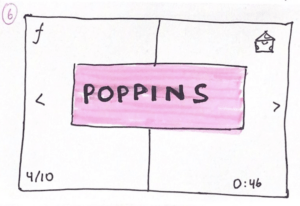
Proximity

Here I use proximity to group elements like timer and score that might not be directly relevant to the gameplay itself while also grouping options for answers on one side of the page to make this ‘up-down-selection’ more patterned and intuitive for the user. I also put the next and previous buttons right next to these options to maintain the directional continuity and proximity in case this feature is used a lot while playing to skip.
A beautiful game: Azul
I was introduced to Azul a couple months ago and in all honesty the colors and visual design in the game are what kept drawing me back to the game. While the game itself fun, it’s a little frustrating for beginners when the optimal strategy isn’t immediately obvious.
Proximity:
The game makes good use of proximity to group related elements. As shown in the image above, each player interacts with two major core components –
- The board: Each player is a given a board on which they organize their tiles and track their scores. Only one player interacts with a board at a time and the tiles/point counters on it. The board itself makes effective use of proximity to stay organized:
- The top half of the board is dedicated to keeping track of scores across rounds
- The bottom left of the board is used for stacking tiles each round.
- The bottom right of the board tracks the tile pattern formed by the player across rounds.
- Tile circles: The circles are placed in the center of the game to be interacted with by all players involved. They also contain the tiles until they’re overturned.
I think the idea of organizing elements interacted with individually and as collectives as separate proximate groups is effective since it really prevents a lot of chaos and hand-crossing while interacting with all these components. The serif font they use also adds to the aesthetic
Color and Texture:
The game makes use of very bright saturated colors and pretty patterns on the board as well as the tiles, giving the game an almost antique? feel. The tiles themselves were modeled after Portugese azuleijos (originally white and blue ceramic tiles) when king Manuel I, on a visit to the Alhambra palace in Southern Spain discovered the beauty of Moorish decorative tiles. The colors and patterns alone are captivating enough to draw people back to the game repeatedly. Another important aspect is the texture of the tiles used on the board. The weighty plastic pieces have a satisfying clatter when jumbled together making the game a very pleasant tactile experience somehow which I really appreciate and have not experienced in any other game.



